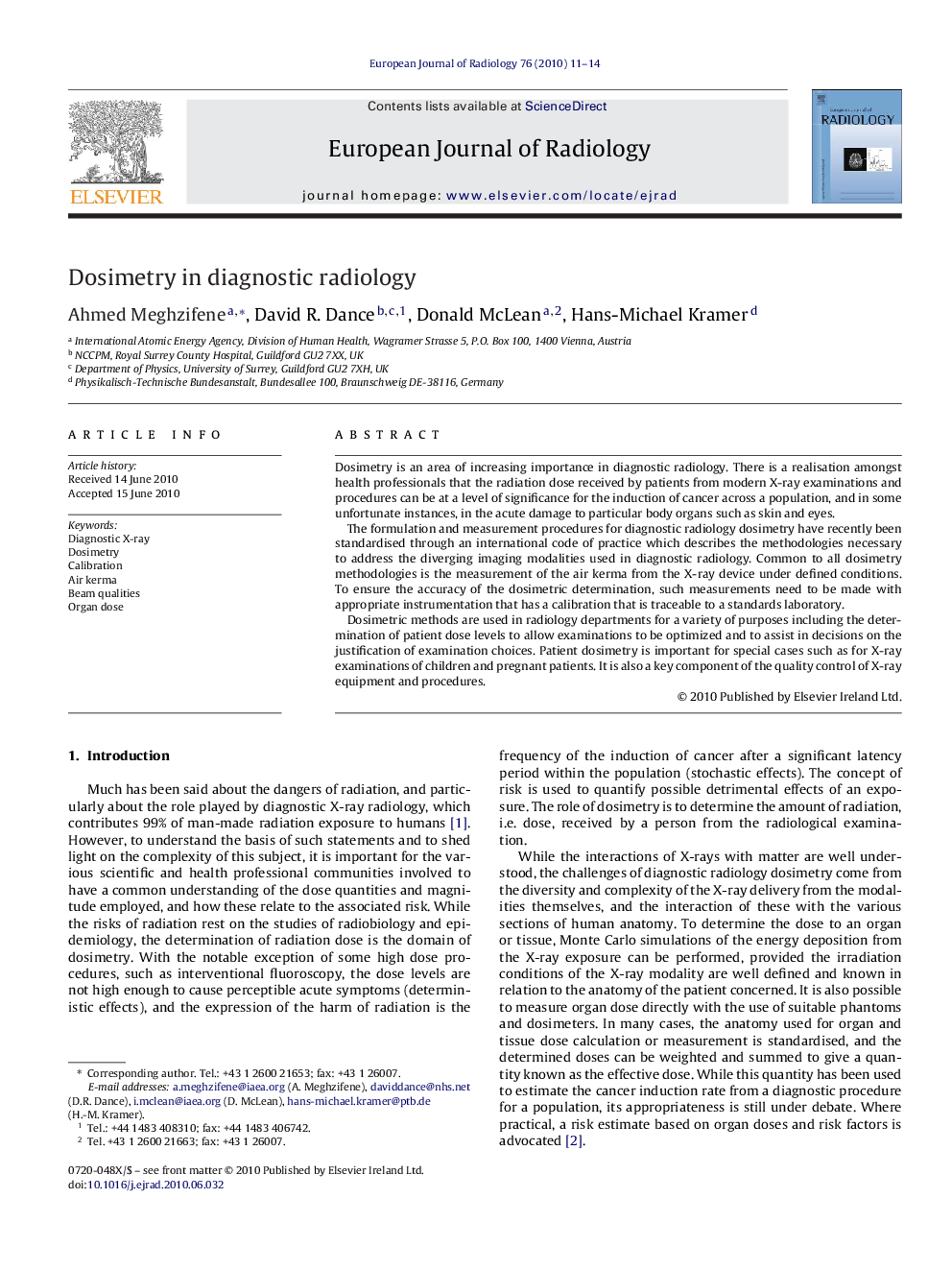| Article ID | Journal | Published Year | Pages | File Type |
|---|---|---|---|---|
| 4226398 | European Journal of Radiology | 2010 | 4 Pages |
Dosimetry is an area of increasing importance in diagnostic radiology. There is a realisation amongst health professionals that the radiation dose received by patients from modern X-ray examinations and procedures can be at a level of significance for the induction of cancer across a population, and in some unfortunate instances, in the acute damage to particular body organs such as skin and eyes.The formulation and measurement procedures for diagnostic radiology dosimetry have recently been standardised through an international code of practice which describes the methodologies necessary to address the diverging imaging modalities used in diagnostic radiology. Common to all dosimetry methodologies is the measurement of the air kerma from the X-ray device under defined conditions. To ensure the accuracy of the dosimetric determination, such measurements need to be made with appropriate instrumentation that has a calibration that is traceable to a standards laboratory.Dosimetric methods are used in radiology departments for a variety of purposes including the determination of patient dose levels to allow examinations to be optimized and to assist in decisions on the justification of examination choices. Patient dosimetry is important for special cases such as for X-ray examinations of children and pregnant patients. It is also a key component of the quality control of X-ray equipment and procedures.
